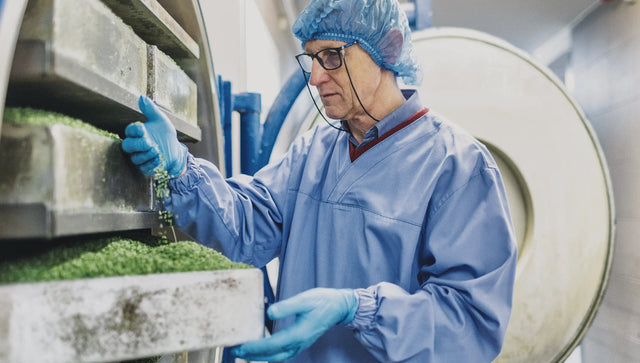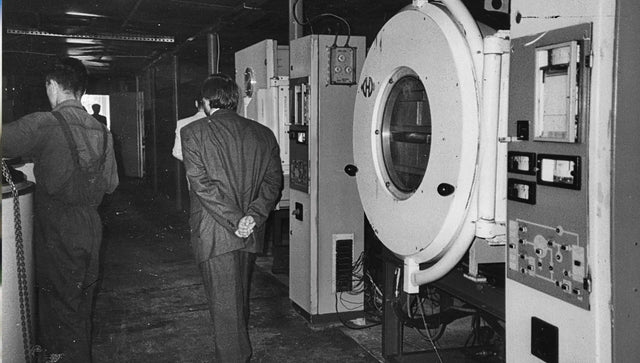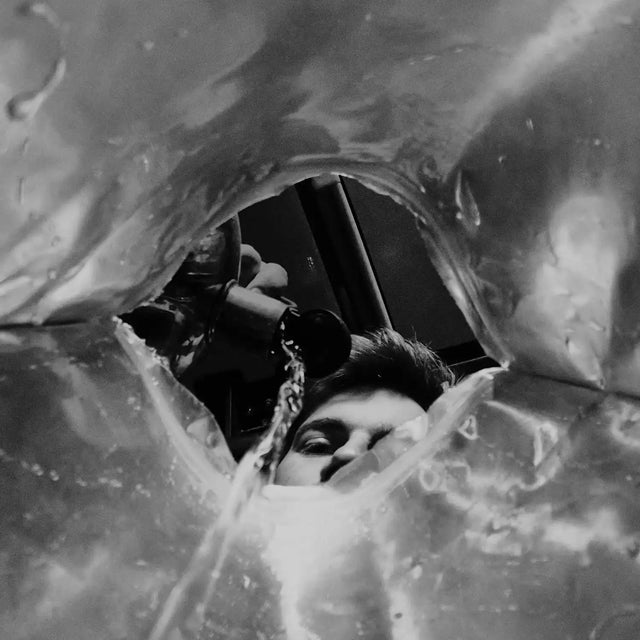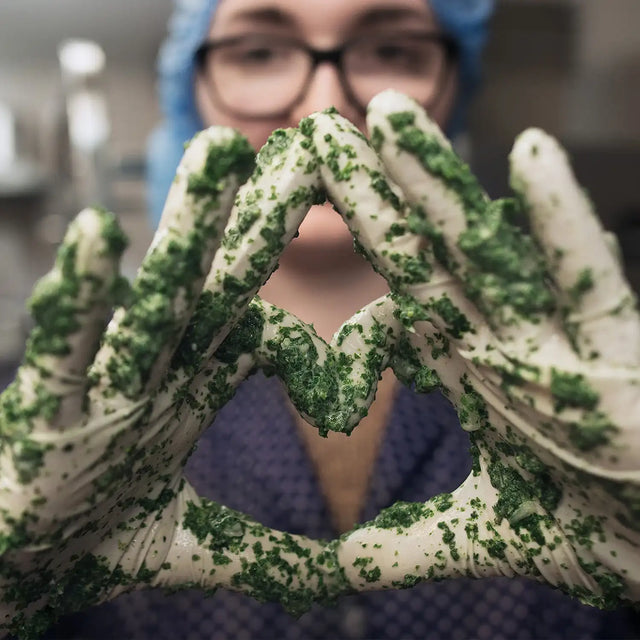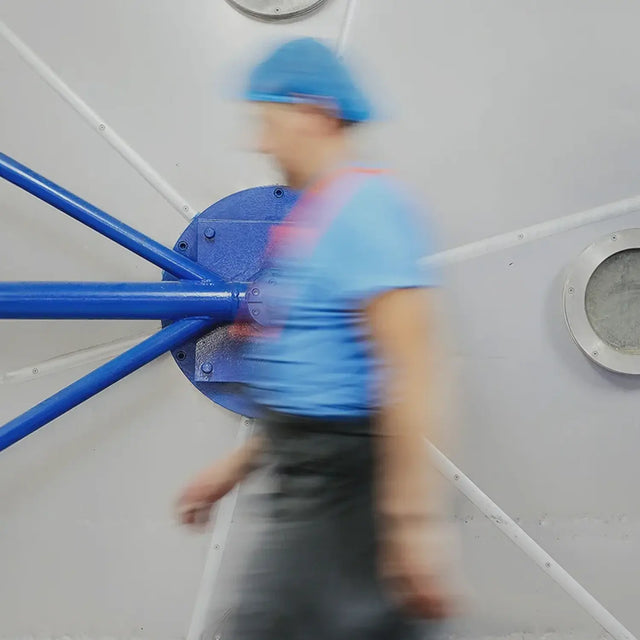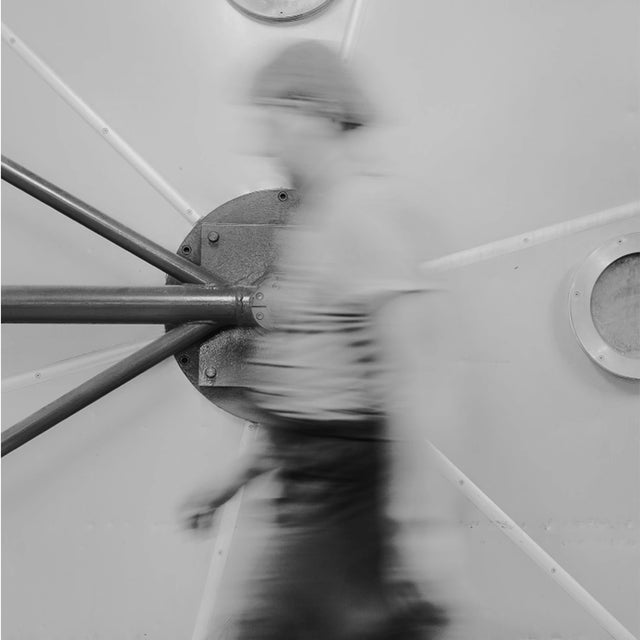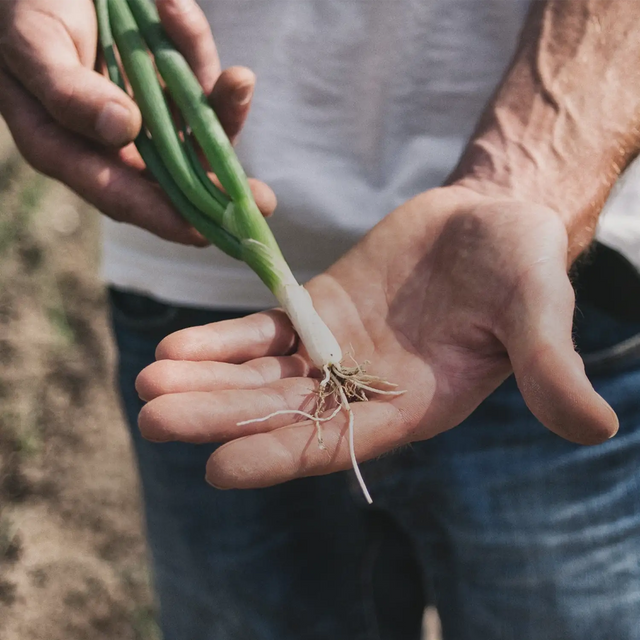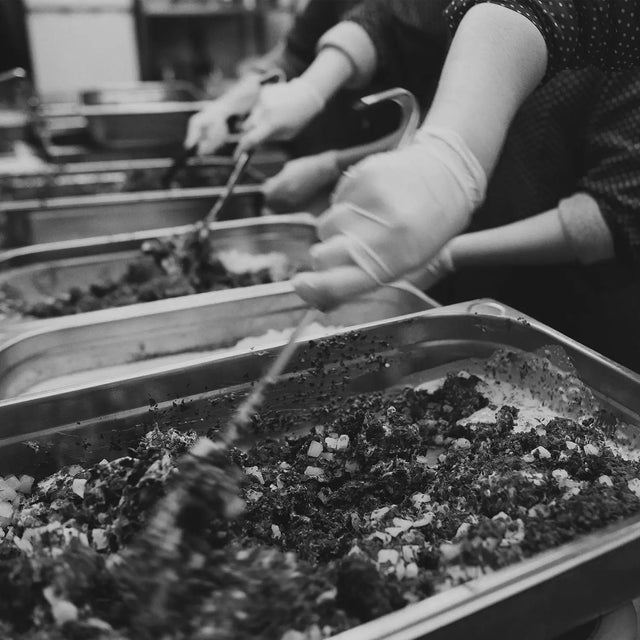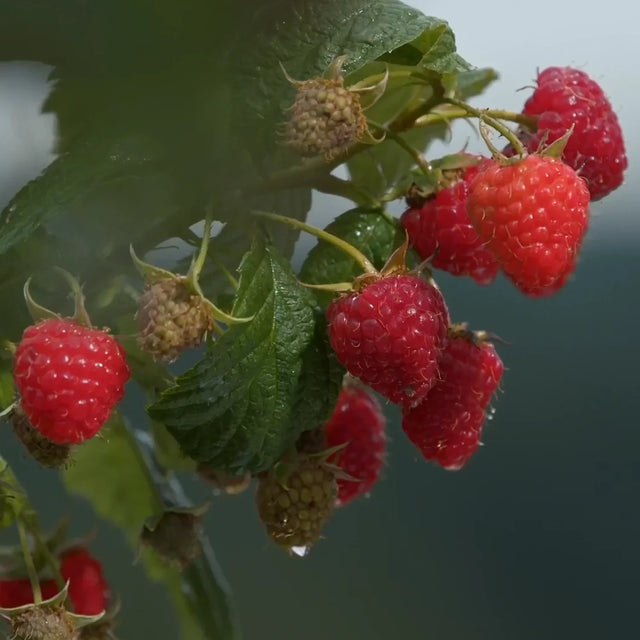It sounds sophisticated, and it is, but that's because nature itself is sophisticated, and freeze-drying is all about recreating the natural phenomenon of sublimation.
Besides creating a visually stunning spectacle, like when a frost-covered meadow steams at sunrise on a cold morning, this natural process allows us to preserve the taste, aroma, structure, and about 95% of the original nutrients of fresh food, making it last for years without any preservatives.
This is what we have been doing here since 1992.
Imagine a freshly picked strawberry.
Then, under a vacuum, a gentle rise in temperature just above 0°C causes the ice to evaporate, moving from its solid state directly into a gas state. This process, called sublimation, removes nearly 96% of the moisture content without degrading even the most fragile nutrients like vitamins and minerals. After this, your strawberry will smell the same, look the same, and taste the same, but now it will be ultralight and last for years.
Freeze-drying food dates back to the Inca civilization around 1200 CE, when the indigenous people harnessed the naturally occurring phenomenon of sublimation to freeze-dry Chuño potatoes. Those unspoiled by technology, primeval origins are a testament to the naturalness and purity of this method. We could fast-forward to NASA space missions to paint an exciting but misleading picture, because modern freeze-drying technology owes everything to what happened between the ancient Incas and space exploration. Tedious scientific work, World War II, the ensuing Cold War with its looming nuclear threat, and finally, profit-driven modern economics. Not so cool anymore.
Nowadays, lyophilization is a fully developed industrial technology widely used in the food sector for preserving perishable products such as fruits, vegetables, herbs, meats, and dairy products. It is also used for producing supplements and functional foods, premium culinary ingredients, baby food, pet food, and a broad range of convenience foods, including outdoor meals. Not to mention long-term emergency supplies and military rations, which were the primary reason this technology advanced so rapidly after WWII.
Exceptional nutrient retention
Freeze-drying delivers maximal retention of original fresh food nutrients compared to other food preservation drying techniques. Since the entire process occurs at low temperatures and in an oxygen-free environment (under vacuum), freeze-drying preserves even the most fragile vitamins and bioactive compounds, which are sensitive to heat and prone to oxidation, with minimal loss of quality. As no other technique yields better results in this regard, freeze-drying is considered the reference drying method for research studies.
Better flavor, texture, and color retention
Freeze-drying is a less damaging process compared to other dehydration methods because there is no heat, no water loss in liquid form, and no oxidation. As a result, freeze-dried food retains flavors, texture, and color better than food preserved using other drying methods, which tend to affect food structure more profoundly.
Extended shelf life
Freeze-drying significantly extends food shelf life when proper air-tight packaging is used. Laboratory tests show that freeze-dried food can last over 25 years without any preservatives or special storage conditions. These exceptional long-storage properties, combined with ultra-lightness and top nutritional qualities, make it an ideal solution for various serious emergency situations, disaster relief, food security provisions, and preparedness. Moreover, the extended shelf life offered by freeze-dried foods helps reduce food loss and waste across various stages of the food supply chain, including consumer and retail waste, which accounts for over 60% of total food waste in developed countries. This, in turn, translates into a positive environmental and social impact.
Champion of Portability
Ultra-lightness*, combined with the ease of storage in any conditions and reduced bulk when needed, makes it a champion of portability among other foods. That's why it is a perfect companion for backpackers, alpinists, sailors, adventurers and explorers. This advantage is the reason it is also the best military field food, especially in extreme weather conditions.
*Freeze-drying can reduce the weight of a meal by 80%.
Preparation? What preparation?
There is no cooking involved, nor is there a need for boiling water; any water will do. You can use hot, warm, or cold water, and in case of an emergency, you can simply eat it dry. No extra dishes or pots are needed; the pouch that contains the meal is enough, so you won’t have to do any washing up either.
Add water*, stir, wait 2-15** minutes… Voila!
*The hotter the water, the faster the rehydration.
**Some meals will rehydrate faster than others, depending on their serving size and ingredients. For example, our Mash and Cheese will be ready in 3 minutes, while Beef Stroganoff needs at least 10 minutes.
'Freeze-dried food is full of preservatives.'
Fact: Freeze-drying is a natural preservation method that uses only physics to evaporate all the water content from the food. Because freeze-drying removes almost all the moisture that promotes bacteria growth, when properly packed, there is absolutely no need for any preservatives, and we do not use any at LYOFOOD. What’s more, no other food preservation method can prolong shelf life without preservatives better than freeze-drying.
'Fine, but it's certainly full of additives.'
Fact: Because freeze-drying is the best method known to humans for preserving original flavor, there is no need to use additives like colorants, flavor enhancers, etc. At LYOFOOD, we take full advantage of this, and all our products are free from any additives.
'For sure it is less nutritious.'
Fact: Freeze-drying occurs in a vacuum and at lower temperatures than air-drying, thus preventing nutrient loss due to heat degradation and oxidation. As a result, it preserves the maximal value of original fresh food nutrients when compared with any other method. It’s hard not to repeat ourselves: freeze-drying is the best method known to humans for preserving original nutrients, including the most fragile vitamins, micronutrients, and bioactive compounds.
'Anyway, it probably lacks flavor and tastes bland.'
Fact: Here we go again: freeze-drying technology actually helps to retain most of the fresh food flavor because the process itself does not diminish it by applying excessive heat or preservatives. What is more, by removing about 98% of the water content, the flavor often intensifies after freeze-drying because there is no water to dilute it. If the freeze-dried meal you are having lacks flavor, blame the cook.
'I bet it is bad for the environment.'
Fact: This assumption is based on a simplification that leads to a false conclusion: freeze-dried food is bad for the environment because freeze-drying has a large environmental footprint due to the significant amount of energy required to operate freeze-dryers. Someone has already put this kind of argument perfectly: that is not only not right; it is not even wrong. Let us explain. Freeze-drying is a slow process with multiple steps requiring a significant amount of energy (e.g., freezing). So, it is true that it is an energy-intensive process. However, the mistake lies in jumping to the false conclusion that high energy consumption automatically equals a large environmental footprint. Energy consumption is just one of many aspects that need to be assessed to make any valid statement about the environmental impact of a given product. Freeze-drying consumes a significant amount of energy, but:
1. It does not generate water, soil, or air pollution, involves no toxicity, and uses no chemicals.
2. Freeze-dried foods are ultralight and easy to store, meaning they can be transported anywhere in the world, or even to space, and stored at a fraction of the cost and resources needed for transporting and storing fresh goods.
3. Freeze-dried foods, when properly packaged, are extremely shelf-stable. The best-before date can be extended to 5, 10, 15, or even 20 years! This means reducing food waste – one of the most significant environmental and social issues we face as humans.
Judging the environmental footprint of a product solely based on energy consumption is like judging a beauty contest using just one criterion... let’s say body weight. Good luck with that. Let’s also remember that the energy used for production is one thing, and its source is another. It would be wise to first determine whether the energy comes from fossil fuels, renewable resources, or a combination of the two, and in what proportions.
Let’s revisit our beauty contest analogy for a moment. Body mass alone provides very little information when considered apart from muscle mass, body fat level, the height of the individual, and the dimensions of the body parts of interest. What does this mean in our case? We have already optimized our machinery and production processes, allowing us to use 30% less energy for the same tasks. And as of 2024, 100% of the energy used by our production plant comes from renewable sources.


